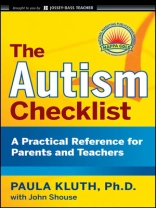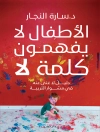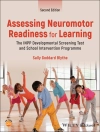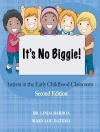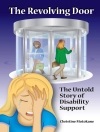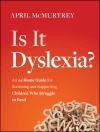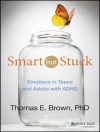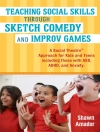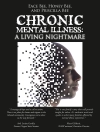A practical resource filled with information, tips, and
checklists for helping kids with autism
This useful, accessible guide offers teachers and parents a
better understanding of children on the autism spectrum and
provides them with the kinds of support and intervention they need.
Written in an easy-to-read checklist format, the book is filled
with up-to-date research, practical advice, and helpful resources
on a wide range of topics. The book covers five areas: basic
information on autism, checklists for parents, checklists for
teachers, effective support strategies, and helpful resources.
* Provides vital, accessible information for parents and teachers
working with children in the autism spectrum
* Contains a wealth of useful strategies, information, and
resources
* A volume in the popular Jossey-Bass Checklist
series
* Offers a comprehensive yet affordable resource
* Kluth is the bestselling author of You’re Going to Love This
Kid!: Teaching Students with Autism
Mục lục
Acknowledgments.
About the Authors.
SECTION ONE: BASIC INFORMATION ON AUTISM AND ASPERGERSYNDROME.
Introduction.
1.1 What We Know About Autism.
1.2 What Do We Mean by the Autism Spectrum?
1.3 Conditions Commonly Associated with Autism.
1.4 Positive Traits Associated with Autism.
1.5 Early Indicators of Autism.
1.6 Autism Myths Versus Autism Facts.
1.7 Tools Used in Autism Screening and Diagnosis.
1.8 Social Differences.
1.9 Communication Differences.
1.10 Movement Differences.
1.11 Sensory Differences and Sensitivity.
1.12 Passions, Interests, and Rituals.
SECTION TWO: CHECKLISTS FOR PARENTS.
Introduction.
2.1 After Diagnosis.
2.2 Sharing the News.
2.3 Help for Families.
2.4 What Those on the Spectrum Need at Home.
2.5 Modifying the Home.
2.6 Safety at Home.
2.7 Safety in the Community.
2.8 Adaptations at Family Events.
2.9 Adaptations for Errands and Outings.
2.10 Adaptations While Traveling.
2.11 Helping Your Child Learn at Home
2.12 Advocating for Your Child.
SECTION THREE: CHECKLISTS FOR TEACHERS.
Introduction.
3.1 What to Do If You Think a Student is on the Spectrum.
3.2 Needs of Students with Autism.
3.3 Helpful Habits of Mind for Teachers.
3.4 Learning About Autism.
3.5 Encouraging Self-Advocacy.
3.6 Addressing Student Fascinations and Passions in the Classroom.
3.7 Supporting Students Who Seek Perfection.
3.8 Supporting Students Who Resist or Refuse to Do Work.
3.9 Helping Students Cope with Anxiety.
3.10 Building a Supportive Classroom Community.
3.11 Creating a Comfortable Classroom.
3.12 Giving Clear Directions in the Classroom.
3.13 Providing Structure in the Classroom.
3.14 Creating Lessons with Students with Autism in Mind.
3.15 Creating More Accessible Whole-Class Discussions and Lectures.
3.16 Creating Assessments Appropriate for Students with Autism.
3.17 Supports and Strategies for Literacy Lessons.
3.18 Supports and Strategies for Math Lessons.
3.19 Helping Students Manage Homework.
3.20 Making Within-School Transitions Easier for Students.
3.21 Making School-to-School Transitions Easier for Students.
3.22 Preventing Behavior Struggles in the Classroom.
3.23 Don?ts for Working with Students with Autism.
3.24 Helping Students with Autism Shine.
SECTION FOUR: MORE HELPFUL STRATEGIES FOR HOME ANDSCHOOL.
Introduction.
4.1 To Keep in Mind for Toddlers and Preschoolers.
4.2. To Keep in Mind for School-Age Children.
4.3 To Keep in Mind for Adolescents and Teenagers.
4.4 Possible Members of a Support Team.
4.5 Strategies for Encouraging and Facilitating Communication.
4.6 Strategies for Supporting Those Without Reliable Communication.
4.7 Strategies for Encouraging and Supporting Social Relationships.
4.8 Strategies for Building Social Skills.
4.9 Addressing Movement Differences.
4.10 Addressing Sensory Issues: Visual.
4.11 Addressing Sensory Issues: Tactile.
4.12 Addressing Sensory Issues: Auditory.
4.13 Addressing Sensory Issues: Olfactory.
4.14 Strategies for Teaching and Learning.
4.15 Promoting and Teaching Organization.
4.16 Promoting and Teaching Stress Relief.
4.17 Helping Those on the Spectrum Cope with Change.
4.18 Addressing Challenging Behavior.
4.19 Strategies for Coping in Crisis.
SECTION FIVE: HELPFUL RESOURCES FOR PARENTS ANDTEACHERS.
Introduction.
5.1 Recommended Videos.
5.2 Recommended Books.
5.3 Recommended Web Sites.
5.4 Recommended Vendors.
5.5 Recommended Organizations.
References.
Index.
Giới thiệu về tác giả
Dr. Paula Kluth is a consultant, educator, and advocate whose
specialties include supporting children with autism and other
disabilities in inclusive classrooms. A former special education
teacher, Kluth is the author of numerous books including You’re
Going to Love This Kid: Teaching Students with Autism in Inclusive
Schools. For more information, go to www.Paula Kluth.com.
John Shouse served as president of the Autism Society of Middle
Tennessee and as vice chair of the national board of the Autism
Society of America. He is the father of three children, including
Evan, his thirteen-year-old son with autism.
